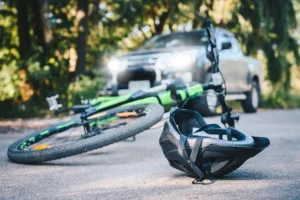Who Has the Right of Way? What Florida Cyclists and Drivers Should Know

Sharing the road safely requires more than just awareness. It takes an understanding of Florida’s traffic laws and the rights and responsibilities that apply to both cyclists and drivers. Unfortunately, confusion about who has the right of way is a major cause of traffic accidents across the state. When vehicles and bicycles collide, the results can be devastating, often leading to severe injuries or even fatalities. Knowing how right of way laws work can help prevent these incidents and protect everyone on Florida’s roads.
The Basics of Right of Way in Florida
Florida law does not automatically grant right of way to any particular person or vehicle. Instead, the law defines who must yield in specific situations. For instance, at a four-way stop, the first vehicle to arrive generally proceeds first. If two vehicles arrive simultaneously, the driver on the left must yield to the one on the right. These same principles apply to cyclists because, under Florida law, bicycles are considered vehicles.
This means that cyclists must obey traffic signals, stop signs, and lane markings just like motorists. Likewise, drivers must respect the rights of cyclists to use the roadway. Understanding this shared responsibility is key to reducing collisions and keeping roads safer for everyone.
Cyclists’ Rights and Responsibilities
Florida law gives cyclists the same rights to the road as drivers of motor vehicles. Cyclists are allowed to ride in most roadways, but there are rules about where they should position themselves. If the lane is wide enough to share safely, cyclists should stay as close to the right-hand edge as is practical. However, they are not required to hug the curb or ride in unsafe conditions, such as near debris or parked cars.
Cyclists can also move into the center of the lane when preparing for a turn, passing another vehicle, or avoiding hazards. When a cyclist is riding in a group, they may ride two abreast if traffic allows, but they must not impede the normal flow of traffic.
At intersections, cyclists must follow the same rules as motorists. This means stopping at red lights and yielding when required. When turning left, cyclists should move to the appropriate lane and signal their intentions clearly. Using hand signals helps drivers anticipate a cyclist’s movements and reduces the risk of misunderstanding.
Drivers’ Duties Toward Cyclists
Motorists have a legal and moral obligation to operate their vehicles with care, particularly when sharing the road with vulnerable users like cyclists. Under Florida law, drivers must give cyclists at least three feet of clearance when passing. This rule helps protect cyclists from being sideswiped or forced off the road.
Drivers should also check for cyclists before opening a car door on the roadside, turning at intersections, or changing lanes. Many collisions occur because drivers fail to notice cyclists approaching from behind or alongside. Being alert and patient can make a significant difference in preventing accidents.
In addition, drivers must yield to cyclists in bike lanes when crossing or merging into them. Cutting across a bike lane without checking for traffic is one of the most common causes of collisions in urban areas. By taking a moment to look carefully, drivers can help prevent serious injuries.
Common Right of Way Scenarios in Florida
Right of way disputes often arise in intersections, roundabouts, and crosswalks. Here are some common scenarios and how the law applies:
- At intersections without signals – The first to arrive proceeds first. If two vehicles or a vehicle and a bicycle arrive at the same time, the one on the left must yield.
- When turning right on red – Drivers must come to a full stop and check for pedestrians and cyclists before proceeding. Many crashes occur because drivers fail to notice cyclists coming straight through the intersection.
- At crosswalks – Cyclists riding across a crosswalk are generally treated like pedestrians, but they must yield to vehicles if they enter suddenly. Conversely, drivers must stop for cyclists or pedestrians who are already in the crosswalk.
- On multi-use paths – Cyclists and pedestrians often share these spaces. Cyclists must yield to pedestrians and give an audible signal before passing, such as ringing a bell or calling out.
Why Right of Way Mistakes Lead to Accidents
Many Florida crashes involving cyclists happen because one party assumed they had the right of way when they did not. Misjudging speed, failing to signal, or ignoring signage can all result in preventable injuries. For cyclists, even a low-speed collision can cause significant harm, including fractures, head injuries, and long-term physical complications.
In some cases, determining fault after an accident can be complex. Both parties may share some degree of responsibility. Florida’s comparative negligence law allows injured victims to recover compensation even if they were partly at fault, as long as their share of the blame does not exceed 50%. This makes accurate evidence collection, such as witness statements, photos, and police reports, essential.
Legal Options for Injured Cyclists
If a driver’s negligence causes a cyclist’s injury, the injured party may be entitled to compensation through a personal injury claim. Damages can include medical expenses, lost income, pain and suffering, and the cost of ongoing rehabilitation. However, insurance companies often try to minimize payouts or argue that the cyclist was at fault.
Working with an experienced personal injury attorney can help level the playing field. A lawyer familiar with Florida traffic laws can investigate the crash, gather evidence, and build a strong case for compensation. They can also negotiate directly with insurers to ensure that victims receive fair treatment and avoid common settlement traps.
Preventing Accidents Through Awareness and Respect
The safest roads are those where all users understand and respect one another. Cyclists can do their part by wearing visible clothing, using lights at night, and signaling their movements clearly. Drivers can help by reducing speed in high-traffic areas, staying alert at intersections, and giving cyclists ample space.
Education also plays a major role. Florida communities have been investing in public awareness campaigns and better bike lane infrastructure to make roads safer for everyone. Still, much of the responsibility lies with individuals making smart, informed decisions behind the wheel and on the handlebars.
Conclusion
Understanding who has the right of way is about more than just following the law—it’s about protecting lives. Whether you are a cyclist navigating traffic or a driver making a turn, a moment of patience and caution can prevent lasting harm.
When accidents do occur, injured cyclists should remember that they have rights under Florida law. Legal guidance can make a significant difference in holding negligent parties accountable and securing the compensation needed to recover.
By promoting mutual respect and awareness on the road, Florida can continue moving toward a safer future for all who share it.

 Call Us Today
- It's Free
Call Us Today
- It's Free